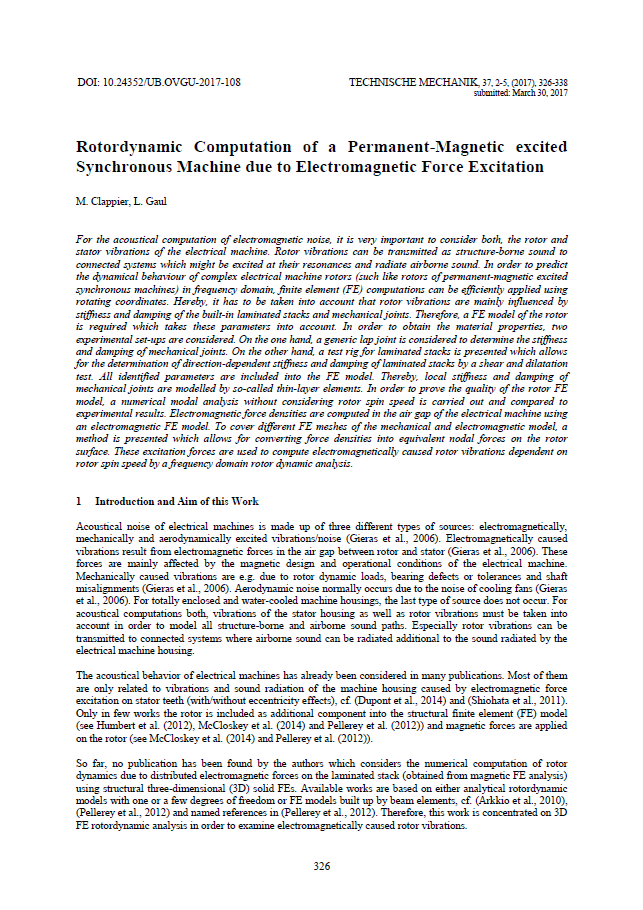Rotordynamic Computation of a Permanent-Magnetic excited Synchronous Machine due to Electromagnetic Force Excitation
DOI:
https://doi.org/10.24352/UB.OVGU-2017-108Abstract
For the acoustical computation of electromagnetic noise, it is very important to consider both, the rotor and stator vibrations of the electrical machine. Rotor vibrations can be transmitted as structure-borne sound to connected systems which might be excited at their resonances and radiate airborne sound. In order to predict the dynamical behaviour of complex electrical machine rotors (such like rotors of permanent-magnetic excited synchronous machines) in frequency domain, finite element (FE) computations can be efficiently applied using rotating coordinates. Hereby, it has to be taken into account that rotor vibrations are mainly influenced by stiffness and damping of the built-in laminated stacks and mechanical joints. Therefore, a FE model of the rotor is required which takes these parameters into account. In order to obtain the material properties, two experimental set-ups are considered. On the one hand, a generic lap joint is considered to determine the stiffness and damping of mechanical joints. On the other hand, a test rig for laminated stacks is presented which allows for the determination of direction-dependent stiffness and damping of laminated stacks by a shear and dilatation test. All identified parameters are included into the FE model. Thereby, local stiffness and damping of mechanical joints are modelled by so-called thin-layer elements. In order to prove the quality of the rotor FE model, a numerical modal analysis without considering rotor spin speed is carried out and compared to experimental results. Electromagnetic force densities are computed in the air gap of the electrical machine using an electromagnetic FE model. To cover different FE meshes of the mechanical and electromagnetic model, a method is presented which allows for converting force densities into equivalent nodal forces on the rotor surface. These excitation forces are used to compute electromagnetically caused rotor vibrations dependent on rotor spin speed by a frequency domain rotor dynamic analysis.





